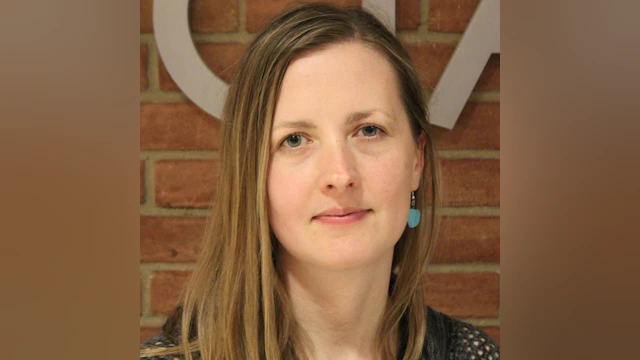The Research Roundup is a regular update of recently published findings in suicide prevention research. AFSP-funded studies included in this roundup examined how…
- Combining intervention techniques may help reduce suicidal behavior in at-risk youth,
- The capacity to imagine future events may play a part in suicidal thoughts and behaviors
- Unique factors distinguished suicidal individuals who purchased lethal means in Sri Lanka, and
- Follow-up care after being hospitalized for suicidal thoughts and behaviors affect suicide risk

Researcher: Ewa Czyz, PhD
Institution: University of Michigan
Grant Type: 2015 Postdoctoral Fellowship – $104,000
Grant Title: Safety Planning with Motivational Interviewing for Healthy Coping (MI-SafeCope)
Safety planning (SP) is a brief best-practice intervention designed to help reduce suicidal behavior by developing and outlining adaptive coping strategies to be employed during times of increased distress and suicidal ideation. Individuals work with clinicians to identify personal suicide warning signs (indicating the safety plan should be used), and then a stepwise plan for coping starting with healthy distraction, moving to sources of support, then to professional resources, followed by ensuring a safe environment and identifying reasons for living. However, emerging empirical evidence has indicated that adolescents at risk for suicide often do not use their safety plan during the high-risk period following discharge from psychiatric care.
To address this, Dr. Ewa Czyz and her colleagues developed a version of safety planning called MI-SafeCope by combining SP with another established intervention, Motivational Interviewing (MI). MI-SafeCope integrates SP's strategies with MI's collaborative and directive communication style, aiming to enhance intrinsic motivation and self-efficacy. After testing MI-SafeCope with 36 adolescents who had recently been hospitalized for suicidal ideation and behaviors, Dr. Czyz found that the enhanced intervention was both feasible (easy to do) and acceptable. The group of adolescents who were given MI-SafeCope showed higher self-efficacy to refrain from suicidal action, greater self-reliance for coping with suicidal ideation, and higher likelihood of using their safety plan to manage suicidal thoughts.
Citation: Micol, V. J., Prouty, D., & Czyz, E. K. (2022). Enhancing motivation and self-efficacy for safety plan use: Incorporating motivational interviewing strategies in a brief safety planning intervention for adolescents at risk for suicide. Psychotherapy (Chicago, Ill.), 59(2), 174–180. https://doi.org/10.1037/pst0000374

Researcher: Christine Cha, PhD
Institution: Teachers College, Columbia University
Grant Type: 2017 Young Investigator Grant – $82,432
Grant Title: Development of an Innovative and Practical Suicide Risk Assessment Battery for Youth
An aim of researchers studying youth who experience suicidal thoughts and behaviors (STBs) is to understand cognitive (i.e., thinking) styles and capacities that may be at play when STBs are present. One such cognitive function that has been identified as a potentially relevant indicator of STBs is episodic future thinking, which is a function that allows us to imagine and plan for future events. It involves mentally simulating possible future scenarios, including thinking about what might happen, how we might feel, and what we might do in those scenarios. In the context of STBs, in addition to playing a key role in developing safety plans, prior research has shown that individuals experiencing STBs tend to demonstrate poorer future thinking.
As the first to study this cognitive function, Dr. Christine Cha and her team recruited 167 adolescents aged 10-17 who presented to an emergency room with recent STBs. They found that after a crisis, these adolescents could imagine some future events, but they didn't see them as very detailed or likely to happen. Older teens were better at imagining detailed future events compared to younger teens. However, the study did not find a link between how well they imagined the future and their likelihood of having suicidal thoughts and behaviors at follow-up. Instead, feeling hopeless was a stronger risk factor.
Citation: Pollak, O.H., Shin, K.E., Baroni, A. et al. An examination of episodic future thinking in the emergency department among youth experiencing suicidal thoughts and behaviors. Eur Child Adolesc Psychiatry (2023). https://doi.org/10.1007/s00787-023-02219-3

Researcher: Michael Eddleston, BM, ScD
Institution: University of Edinburgh
Grant Type: 2018 Focus Grant – $1,286,656
Grant Title: RCT to Determine Whether Pesticide Vendor Training Reduces Pesticide Self-poisoning in Rural Asia
When someone is in a suicidal crisis, limiting their access to lethal means is an incredibly effective method that could prevent a death by suicide. Different types of lethal means require different types of strategies and culturally relevant decisions to implement approaches to safety when people are in crisis. These decisions can vary country by country, and culture by culture. Ultimately, when developing strategies for limiting access to lethal means, it is about identifying indicators of risk (e.g., socio-demographic factors or psychosocial factors), and educating related parties on what to look out for.
With this in mind, Dr. Michael Eddleston and his team in Sri Lanka embarked on figuring out what factors about an individual were associated with them purchasing lethal means with the intention of attempting suicide. Dr. Eddleston did this by comparing data from a group who purchased the lethal means and went on to attempt or die by suicide with data from a group who made the same purchase but did not use them for self-harm. After analyzing data and interviews with related parties, Dr. Eddleston found that alcohol intoxication and being a non-farmer with no need for pesticides were the main distinguishing factors indicating potential risk for suicide. The study methods and results will help educate related parties in Sri Lanka and also help serve as a model for determining factors associated with other types of lethal means
Citation: Weerasinghe, M., Konradsen, F., Eddleston, M., Pearson, M., Jayamanne, S., Knipe, D., Hawton, K., Gunnell, D., & Agampodi, S. (2020). Factors associated with purchasing pesticide from shops for intentional self-poisoning in Sri Lanka. Tropical medicine & international health : TM & IH, 25(10), 1198–1204. https://doi.org/10.1111/tmi.13469

Researcher: Timothy Schmutte, PsyD
Institution: Yale University
Grant Type: 2020 Young Investigator Grant – $88,548
Grant Title: Hospital Management of Suicidal Older Adults and Subsequent Mortality in Medicare and Medicare Advantage Enrollees
Older adults in the U.S. and other countries have the highest rates of suicide. Among adults seeking emergency care for suicidal thoughts or behaviors, older patients are the fastest-growing group and are considered to be most at-risk for suicide death during the period following hospital discharge. Given these conditions, there has been a focus on follow-up care during the week after hospitalization.
With this in mind, Dr. Timothy Schmutte examined 2015 Medicare and National Death Index data from 36,557 adults aged 65 and older hospitalized for suicidal ideation or behavior. His analysis revealed that 39% of the cohort received follow-up care. Factors associated with receiving follow-up care included older age, female gender, hospitalization for a suicide attempt, and the presence of medical comorbidities. Conversely, those less likely to receive follow-up care were more likely to be Black and live in areas with limited access to care. The individuals who received follow-up care and later died by suicide tended to be male and without prior mental health care. These findings underscore the importance of reevaluating access to follow-up care and identifying those at highest risk of suicide.
Citation: Schmutte, T., Olfson, M., Xie, M., & Marcus, S. C. (2024). Association of 7-Day Follow-Up With 6-Month Suicide Mortality Following Hospitalization for Suicidal Thoughts or Behaviors Among Older Adults. The American journal of geriatric psychiatry : official journal of the American Association for Geriatric Psychiatry, 32(1), 128–134. https://doi.org/10.1016/j.jagp.2023.08.011
Learn more about the AFSP research grants featured in this monthly roundup, as well as others, here.
